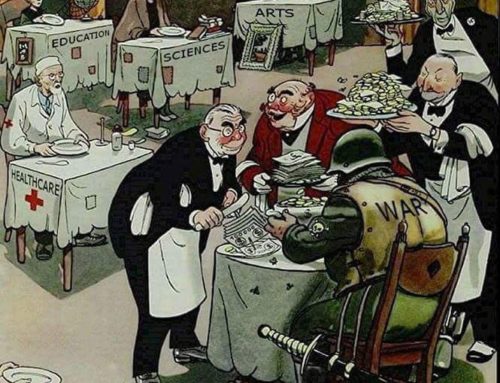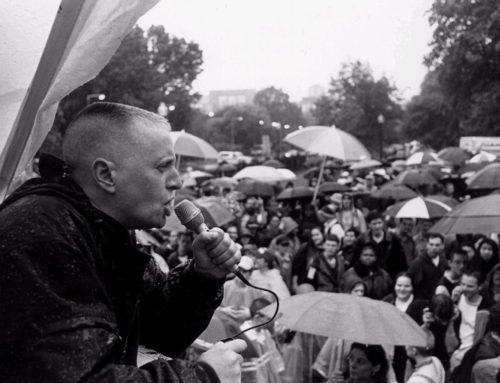It is no longer a question that we are being monitored. Now, the question
is how do we address the culture of acceptance regarding our loss of
privacy and our organizing?
The NSA began attempting to break old encryption technologies in 2000. Ten years later they could decode old encrypted data that, until then, was secure. As NSA whistleblower, Edward Snowden’s last revelation exposed, the NSA and its British counterpart, the GCHQ, are investing $250 million a year in massively invasive software. This software will covertly and heavily influence the design of numerous undisclosed technological products, making them vulnerable to NSA intrusion. With this enormous budget, $230m more than that of PRISM, the government’s giant private data collection and analysis system, it seems warranted to speculate that Apple’s new technology, which allows police officers to block data (read: video/pictures) transmissions in any area, could be a result of an undisclosed partnership between the U.S. government and Apple.
The lack of public outrage following the disclosure of PRISM’s scope, or maybe the short duration of this outrage, is attributable to a larger problem. The apparent problem of apathy. analysis paralysis, or simply the absence of critical thinking in American society.
In the context of an effectively complacent and pacified society, it wouldn’t matter if the NSA monitored an individual’s emails. In a society acceptant of extreme surveillance the sophism that obedient, law-abiding citizens should have nothing to hide from the NSA is presented. However, in the context of a society that is struggling to grasp and denounce the destructive nature of capitalism, the offense that the NSA is committing bears a real, as well as a symbolic, threat. It is not only about feeling powerless over Big Brother stepping into your household. It is about the preemption of specific protest tactics, and the effect this can have on the development of revolutionary praxis in the U.S.
If we are to stop capitalism from tearing the world apart, we’ll need morethan the right theory to define it and oppose it. Road blockages, occupations, strikes… all of these tactics help win small victories that propel people to continue to fight. But with the passage of H.R. 347, the Federal Restricted Buildings and Grounds Improvement Act (also known as the Trespass Bill) of 2011, all of these tactics might be impaired. Protesters in areas under the jurisdiction of the Secret Service can be imprisoned even if they are unaware that the Secret Service is overseeing the area. In the past, NATO and G8 summits have received this coverage. Manifestations following the line of the 1999 World Trade Organization protest in Seattle for example, are now at risk of being preemptively obstructed before receiving an ok amount of media coverage, one of the few positive effects of these events when they occur in the absence of an anti-capitalist movement.
Preventative measures such as blocking a city square before an action
is held, or the placement of undercover police officers posing as
protesters (who often incite violence within peaceful actions) are even
more easily maneuverable given the reach of PRISM. Both of these tactics
were used heavily against the Occupy Movement.
Although it´s unlikely that in the next few years there´ll be sustained conflict between radicals and authorities as a result of environmental degradation (because the more severe effects are likely to show later), the Department of Defense (DoD) has already acknowledged that environmental threats are imminent. The DoD has thus, employed Prism in the search for potential insurgents. As an [date] article [by author] in The Guardian mentions, the 2009 DoD report ¨predicted a resurgence of: anti-government and radical ideologies that potentially threaten government stability´ due to ´an era of persistent conflict´ stemming from competition for ´depleting natural resources and overseas markets´¨. These predictions highlight and emphasize the need for secureand less technologically-dependent methods of organizing radical environmental resistance. But, it also demonstrates the need for building a wider movement that will be capable of responding to the environmental, social, and economic challenges of capitalism before a state of emergency is reached.
Regarding the development of a social movement, potential large-scale actions that could build unity through demands amplified by media coverage are at risk of being undermined. The preemptive militarization of protest areas, the immediate dissolution of protests, the infiltration of violent undercover agents, etc are obstacles of movement-building actions. The intrusions facilitated by Prism, however, do not necessarily neutralize the possibility of a large-scale social movement.
On the contrary, these obstacles may in fact encourage autonomous
anti-capitalist organizations to engage in more effective grassroots
strategies. It’s possible that the low (or inexistent) level of internet
security anti-capitalists might be able to obtain might push us to rely
on personal connections more, drawing in larger networks of personal
connections in our disruptions. It’s also possible that a social
atmosphere increasingly drained by repression might draw people closer
to the brink of outrage, sending millions to the streets regardless of
government surveillance. Whatever the case is, we need to the do the
work of denouncing this system and normalizing vocal, public opposition
to it. Only this will draw us closer to a transformative awakening.


